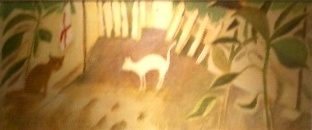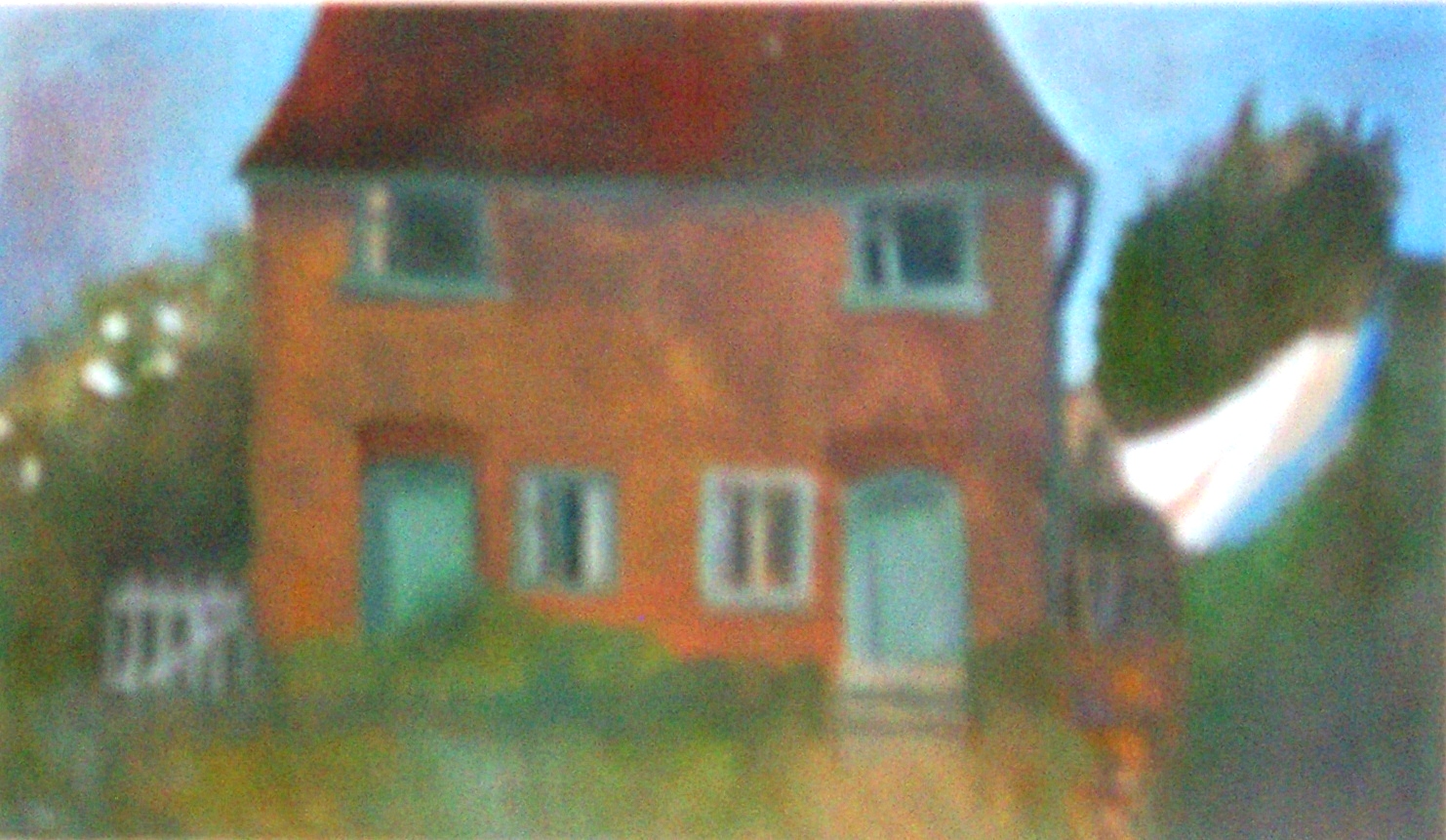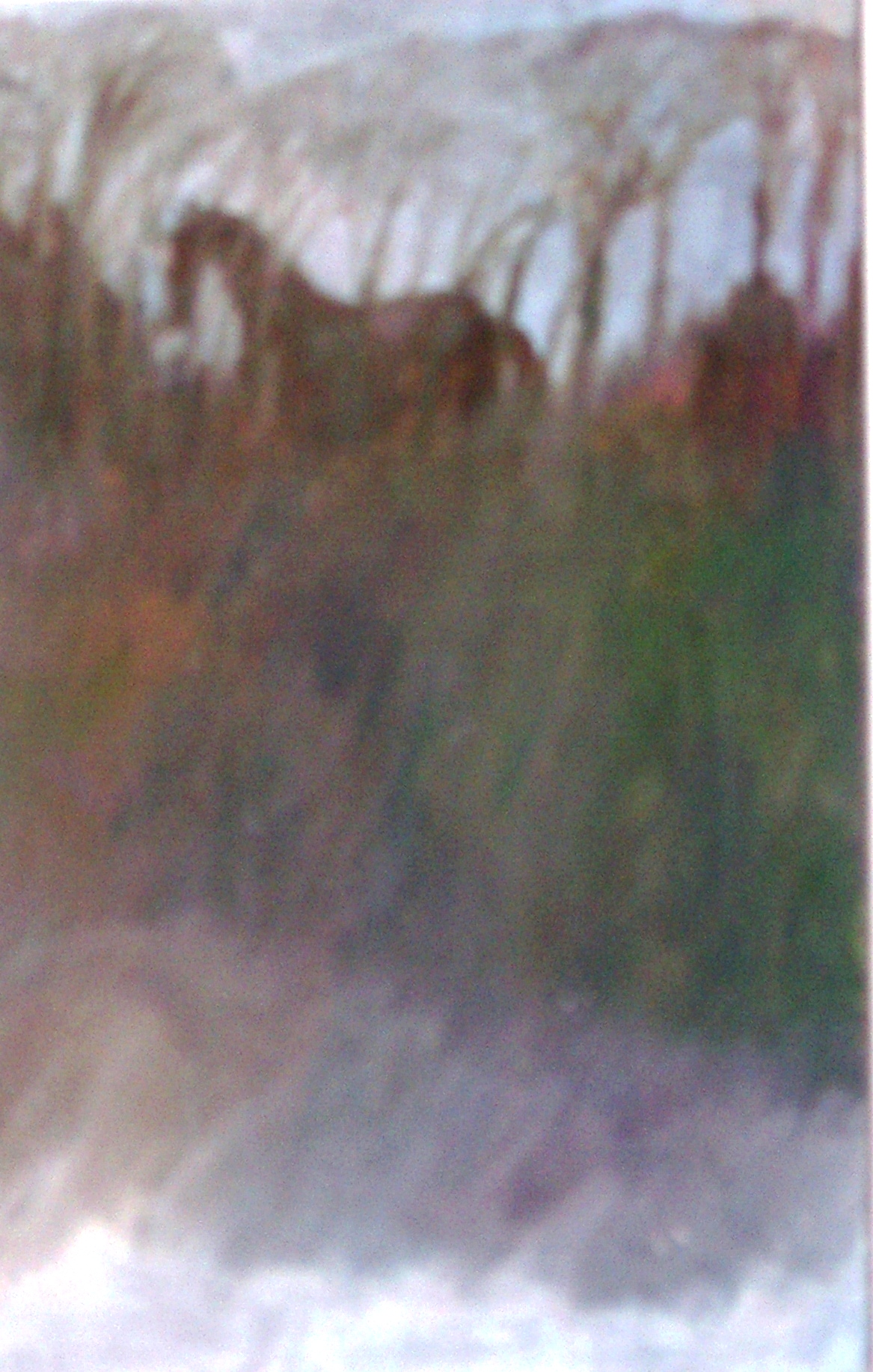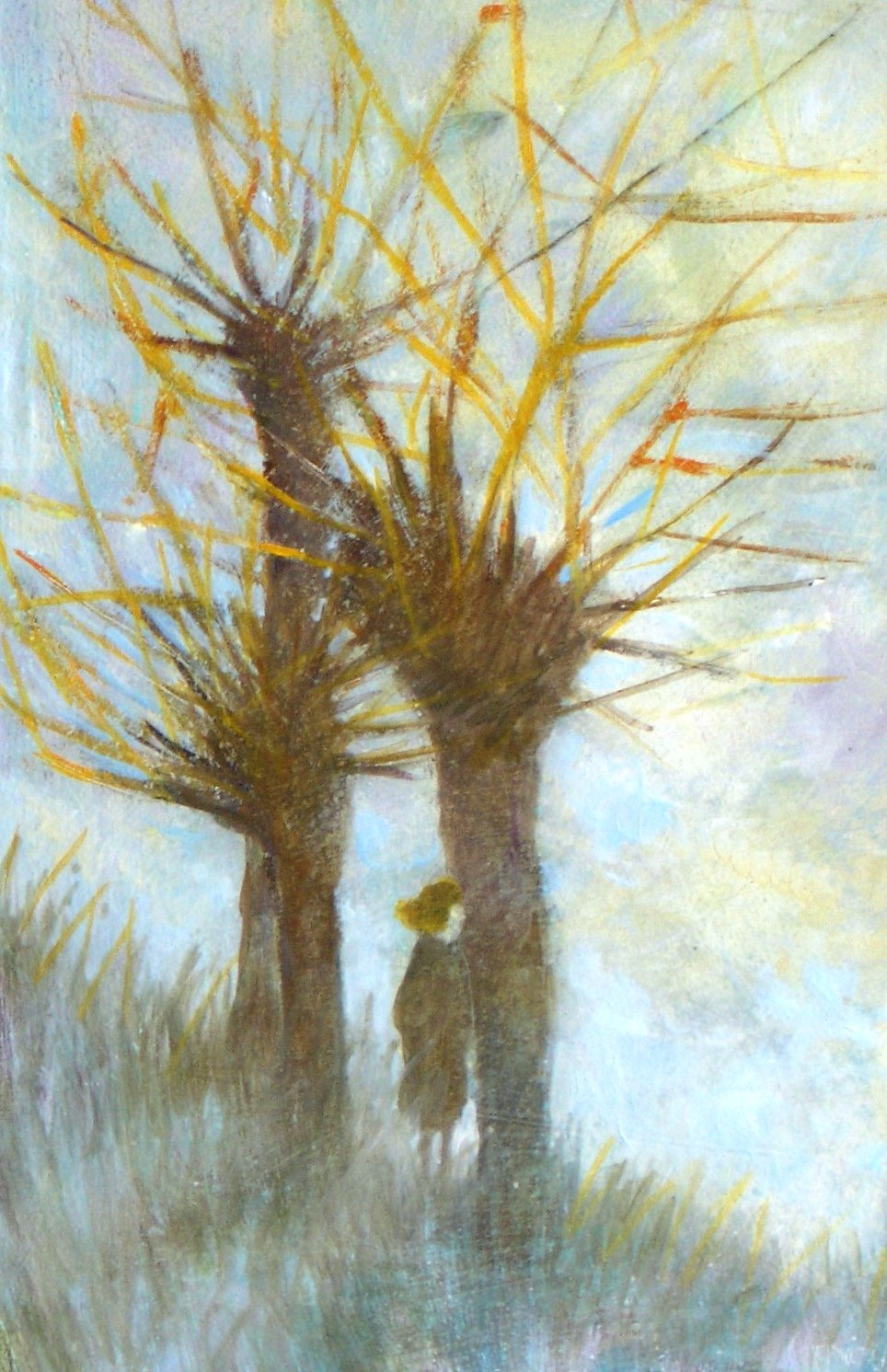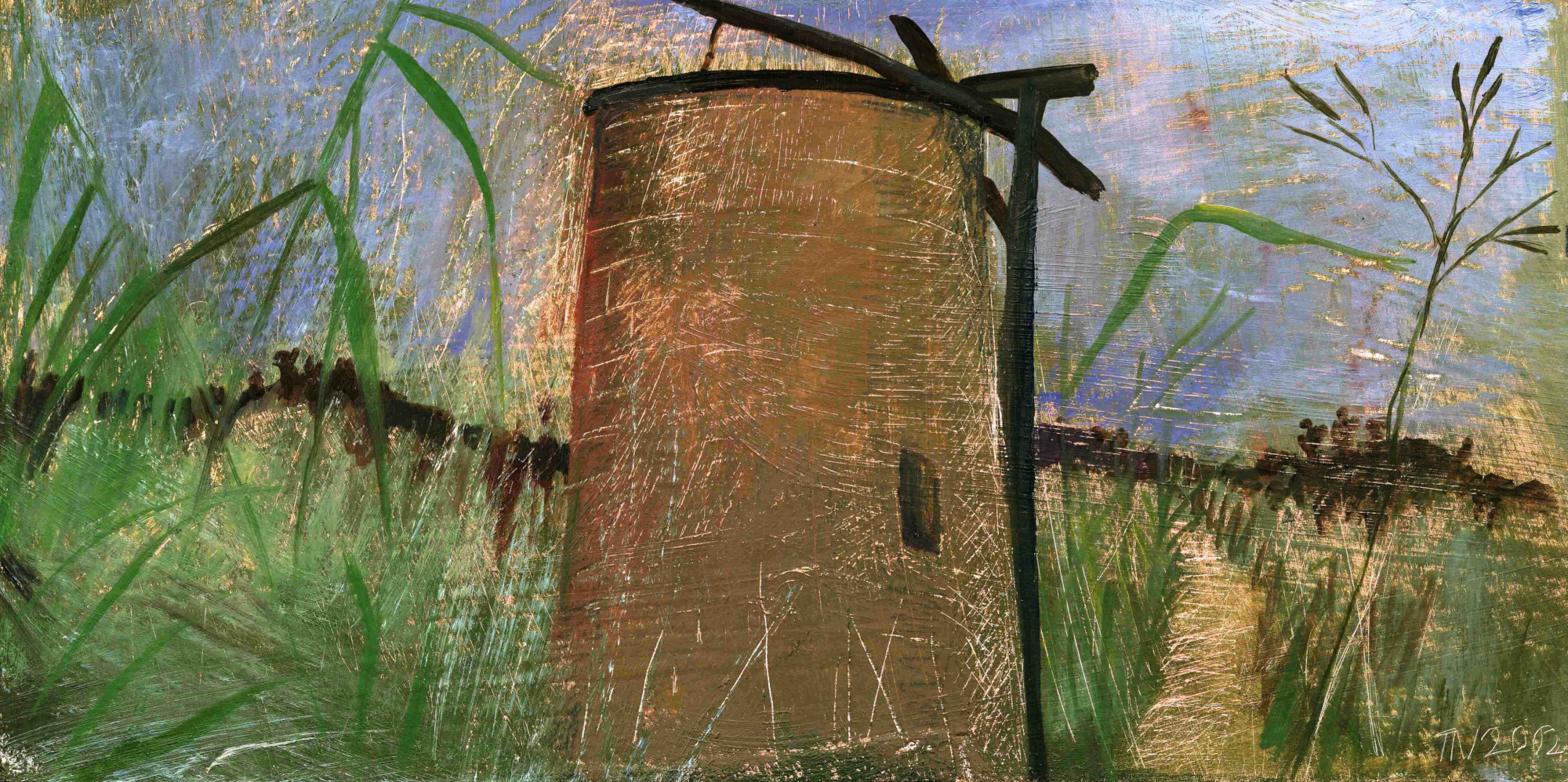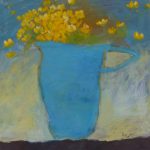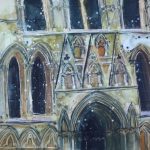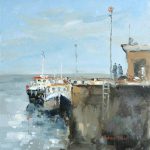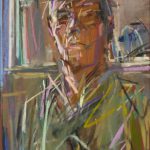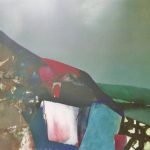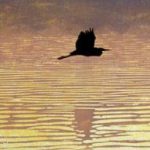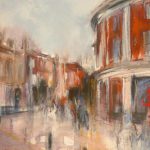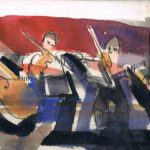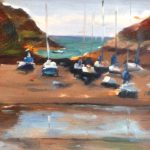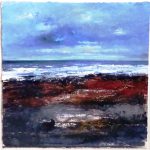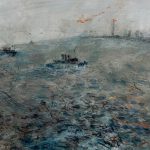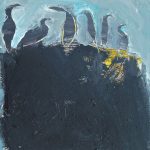‘A celebration of the ordinary’ For Suffolk painter Tessa Newcomb, Suffolk’s beaches, fields, allotments, people & animals are a constant source of ordinary – and yet wonderful – incidents. Tessa Newcomb is the daughter of the renowned painter Mary Newcomb & has emerged as a major artist in her own right.
Read full bio
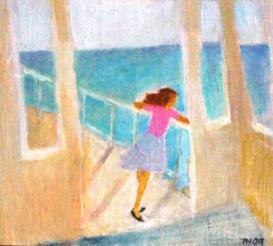
She is based in Suffolk, which for her is an unkempt land involving odd encounters with working figures, dogs, boats, allotments, wild churchyards and even wilder flowers. Her first memory of painting is as a child using up the offcuts of board left by her mother and she says that is why, to this day, her paintings are often on unusual shaped rectangles of board – either long and thin, or tall and thin.
Tessa’s work has a vividness of spirit which has been likened to the early work of Ben & Winifred Nicholson, or Christopher Wood. The starting point for a painting is swift notations drawn while out wandering. This may mean cycling in rural Suffolk or Norfolk, ambling through allotments, crossing London streets & bridges in sunshine or drizzle, or exploring ancient European squares. Poetry or prose may also inspire her, such as Proust or Hopkins, or passages of music or other artworks. For example, the starting point for her recent series of Paris paintings was early 20C urban photographs.
The results are idiosyncratic in their treatment of the scale and perspective of man-made shapes, with a bit of the naive, but hers is a prolific and strong talent, various in its manifestations and with an apparently ceaseless capacity to make effective and evocative pictures.
Like the 18C naturalist Gilbert White, who observed Timothy the tortoise eating lettuces, dandelions & thistles, Tessa Newcomb observes the life of an allotment with sensuous clarity – seven brown hens pecking round a mossy pole, the poetry of weeds & grasses, & the intricate tracery of netting. In 2006 she wrote:
Since having children 20 or so years ago my painting trips had mostly been restricted to East Anglia – apart from glimpses caught on family holidays, often painted in the tent.
However in 2005 I went to Bologna & Paris. Bologna in October – full of Italian ochres, deep reds, strong shadows across tablecloths & pointed pink shoes against crumbling ochre walls.
Paris in March was unbelievably cold, with days either startlingly clear or consisting of wet sleet smacking you across the face. Both the trips were wonderful experiences for me, & I feel that the paintings reflect this, being in essence quite different from my beloved Suffolk.
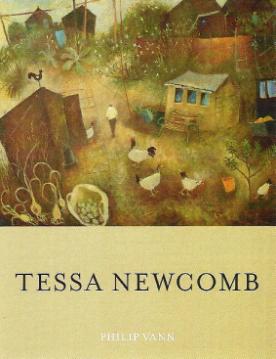
In 2010 the first of two major books on her work was published. Author Philip Vann described her as “an artist of singular vision … whose subtly multi-layered paintings are illuminated by an interior radiance, an awareness of what she calls ‘Spaces and Silences’, and a rare, magical poignancy.“
She exhibits regularly with Crane Kalrnan Gallery in London & galleries in East Anglia. Kentmere House is her only northern gallery.
Tessa Newcomb

‘A celebration of the ordinary’ For Suffolk painter Tessa Newcomb, Suffolk’s beaches, fields, allotments, people & animals are a constant source of ordinary – and yet wonderful – incidents. Tessa Newcomb is the daughter of the renowned painter Mary Newcomb & has emerged as a major artist in her own right.
Read full bio

She is based in Suffolk, which for her is an unkempt land involving odd encounters with working figures, dogs, boats, allotments, wild churchyards and even wilder flowers. Her first memory of painting is as a child using up the offcuts of board left by her mother and she says that is why, to this day, her paintings are often on unusual shaped rectangles of board – either long and thin, or tall and thin.
Tessa’s work has a vividness of spirit which has been likened to the early work of Ben & Winifred Nicholson, or Christopher Wood. The starting point for a painting is swift notations drawn while out wandering. This may mean cycling in rural Suffolk or Norfolk, ambling through allotments, crossing London streets & bridges in sunshine or drizzle, or exploring ancient European squares. Poetry or prose may also inspire her, such as Proust or Hopkins, or passages of music or other artworks. For example, the starting point for her recent series of Paris paintings was early 20C urban photographs.
The results are idiosyncratic in their treatment of the scale and perspective of man-made shapes, with a bit of the naive, but hers is a prolific and strong talent, various in its manifestations and with an apparently ceaseless capacity to make effective and evocative pictures.
Like the 18C naturalist Gilbert White, who observed Timothy the tortoise eating lettuces, dandelions & thistles, Tessa Newcomb observes the life of an allotment with sensuous clarity – seven brown hens pecking round a mossy pole, the poetry of weeds & grasses, & the intricate tracery of netting. In 2006 she wrote:
Since having children 20 or so years ago my painting trips had mostly been restricted to East Anglia – apart from glimpses caught on family holidays, often painted in the tent.
However in 2005 I went to Bologna & Paris. Bologna in October – full of Italian ochres, deep reds, strong shadows across tablecloths & pointed pink shoes against crumbling ochre walls.
Paris in March was unbelievably cold, with days either startlingly clear or consisting of wet sleet smacking you across the face. Both the trips were wonderful experiences for me, & I feel that the paintings reflect this, being in essence quite different from my beloved Suffolk.

In 2010 the first of two major books on her work was published. Author Philip Vann described her as “an artist of singular vision … whose subtly multi-layered paintings are illuminated by an interior radiance, an awareness of what she calls ‘Spaces and Silences’, and a rare, magical poignancy.“
She exhibits regularly with Crane Kalrnan Gallery in London & galleries in East Anglia. Kentmere House is her only northern gallery.
